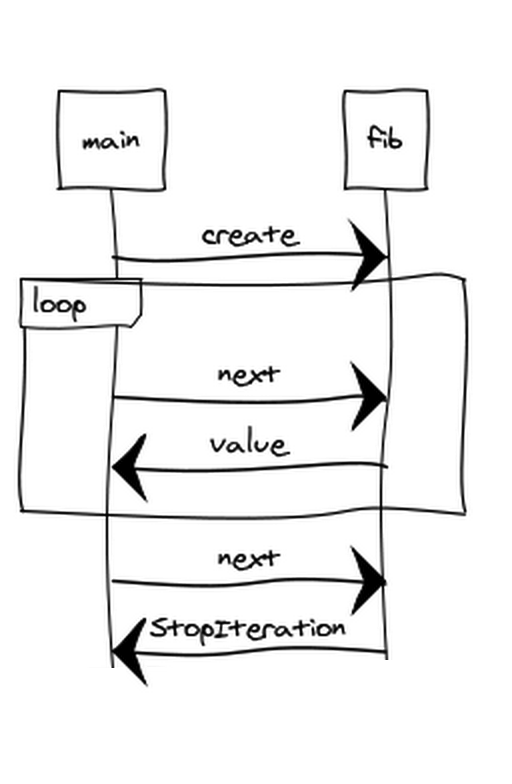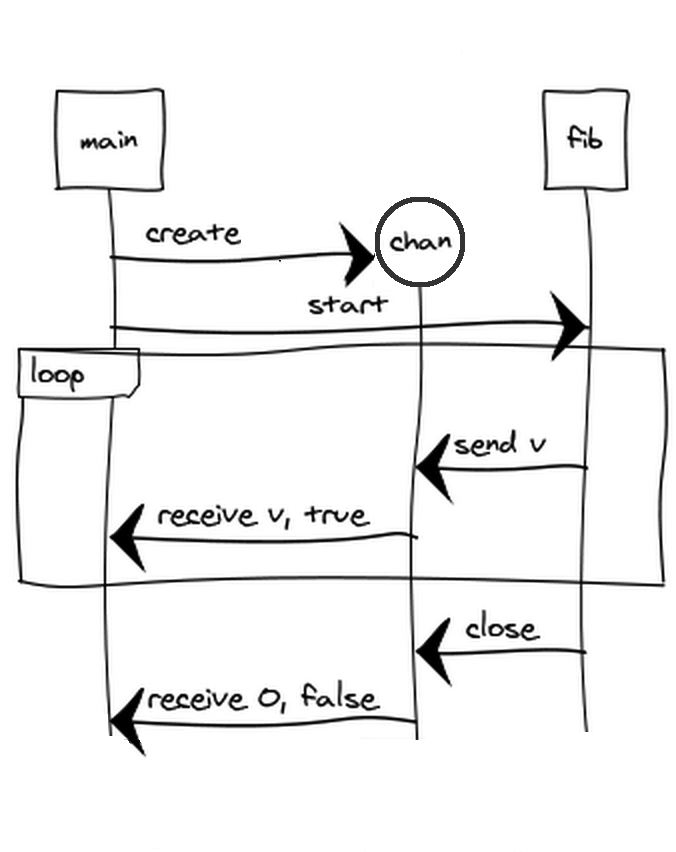Go for Pythonistas
https://talks.golang.org/2013/go4python.slide#1
Things I don't like about Python (it'll be short)
Beautiful and simple
Dynamic typing - nice because it's concise, like Python.
a = "hello" b = 1 # but also a = 2
Static typing - can be verbose, like Java or C++.
Foo foo = new Foo();
Static typing with inferred types, like Go.
a := "hello" b := 1 // but no a = 2
Statically-typed Python? Check mypy and Cython.
Run time pyrotechnics
name = 'pythonista'
# This code only works half of the time.
if random.random() > 0.5:
print 'hey '+name+', you win!'
else:
print 'sorry '+nane+', you lose'
I don't want start a flame war here but ...
100% code coverage is a symptom
- Code coverage should point you to untested cases.
- Not a way to find typos!
- 100% code coverage doesn't mean bug free.
Other things I don't like
- Deploying - managing dependencies.
- Performance - "not too slow" is often not fast enough.
- Magic! (e.g.:
__magic__:**kargs,__getattr__)
A list of magic methods in Python:
www.rafekettler.com/magicmethods.html
And I *do* like concurrency!
A lot has been said about Python's infamous Global Interpreter Lock.
You should watch Mindblowing Python GIL, by David Beazley.
Things I like about Python
Things I like about Python
- The Zen of Python. (Go and the Zen of Python)
- Hashes and arrays are part of the language.
- The standard library.
- Magic! A bit of code can do a lot.
A bit of code
fib.py
Have you ever heard of Fibonacci?
def fib(n):
a, b = 0, 1
for i in range(n):
a, b = b, a + b
return b
def fib_rec(n):
if n <= 1:
return 1
else:
return fib_rec(n-1) + fib_rec(n-2)
for x in range(10):
print fib(x), fib_rec(x)
fib.go
Something familiar?
func fib(n int) int { a, b := 0, 1 for i := 0; i < n; i++ { a, b = b, a+b } return b } func fibRec(n int) int { if n <= 1 { return 1 } return fibRec(n-1) + fibRec(n-2) } func main() { for i := 0; i < 10; i++ { fmt.Println(fib(i), fibRec(i)) } }
Fibonacci without generators? What?
Python generators are awesome.
def fib(n):
a, b = 0, 1
for i in range(n):
a, b = b, a + b
yield a
Mechanically complex.
f = fib(10)
try:
while True:
print f.next()
except StopIteration:
print 'done'
But very easy to use.
for x in fib(10): print x print 'done'
Python generators

Note the generator executes concurrently. Hmm... I like concurrency.
Go concurrency
Based on goroutines and channels.
- Goroutines: very light processing actors (the gophers).
- Channels: typed, synchronized, thread-safe pipes (the arrows).

"Generator" goroutines

"Generator" goroutines
Uses a channel send instead of yield.
func fib(c chan int, n int) {
a, b := 0, 1
for i := 0; i < n; i++ {
a, b = b, a+b
c <- a
}
close(c)
}
func main() { c := make(chan int) go fib(c, 10) for x := range c { fmt.Println(x) } }
"Generator" goroutines
A more generator-like style:
func fib(n int) chan int {
c := make(chan int)
go func() {
a, b := 0, 1
for i := 0; i < n; i++ {
a, b = b, a+b
c <- a
}
close(c)
}()
return c
}
func main() {
for x := range fib(10) {
fmt.Println(x)
}
}
Exercise: generating prime numbers
Write a function that returns a channel and sends the first n prime numbers on
it.
Given the function prime:
// prime returns true if n is a prime number.
func prime(n int) bool {
for i := 2; i < n; i++ {
if n%i == 0 {
return false
}
}
return true
}
Use the Go playground:
Solution: generating prime numbers
func primes(n int) chan int {
c := make(chan int)
go func() {
for i := 1; n > 0; i++ {
if prime(i) {
c <- i
n--
}
}
close(c)
}()
return c
}
func main() {
for p := range primes(10) {
fmt.Println(p)
}
}
Exercise: Fibonacci primes
Write a filterPrimes function that takes a channel of ints as a
parameter and returns another channel of ints.
All the prime numbers that filterPrimes receives from the input channel are
sent into the output channel.
Complete this code snippet:
Solution: Fibonacci primes
func filterPrimes(cin chan int) chan int {
cout := make(chan int)
go func() {
for v := range cin {
if prime(v) {
cout <- v
}
}
close(cout)
}()
return cout
}
func main() {
for p := range filterPrimes(fib(20)) {
fmt.Println(p)
}
}
But there's much more
Goroutines and channels aren't just for generators. They can be used to model
all kinds of concurrent systems.
To learn more:
- Concurrency patterns, by Rob Pike
- Advanced Concurrency Patterns, by Sameer Ajmani
Object-oriented Go
Object-oriented Go
A type declaration.
type Name struct {
First string
Middle string
Last string
}
A method declaration.
func (n Name) String() string {
return fmt.Sprintf("%s %c. %s", n.First, n.Middle[0], strings.ToUpper(n.Last))
}
Constructing a Name and using it.
n := Name{"William", "Mike", "Smith"}
fmt.Printf("%s", n.String())
Methods on anything
There's more to types than structs.
type SimpleName string
You can define methods on any type.
func (s SimpleName) String() string { return string(s) }
Or almost any type.
func (s string) NoWay()
You can only define methods on types within the same package.
Duck typing
Duck typing
If it walks like a duck ...
What defines a duck?
- Is there an explicit list of "duck" features?
- What if the duck is not exactly a duck?
s/duck/file-like object/g
Go interfaces
Simply a set of methods.
From the fmt package:
type Stringer interface {
String() string
}
fmt.Println calls the String method if the parameter is a Stringer.
n = Name{"William", "Mike", "Smith"}
fmt.Println(n)
A type with all the methods of the interface implements the interface.
Implicit satisfaction == No "implements"
Structural typing: it doesn't just sound like a duck, it is a duck.
And that's checked at compile time.
Decorators
Decorators
A convenient way to wrap a function.
def auth_required(myfunc):
def checkuser(self):
user = parse_qs(urlparse(self.path).query).get('user')
if user:
self.user = user[0]
myfunc(self)
else:
self.wfile.write('unknown user')
return checkuser
A function can be decorated using @.
class myHandler(BaseHTTPRequestHandler):
@auth_required
def do_GET(self):
self.wfile.write('Hello, %s!' % self.user)
Decorators
If we run it.
try:
server = HTTPServer(('', PORT_NUMBER), myHandler)
server.serve_forever()
except KeyboardInterrupt:
server.socket.close()
This is unauthorized:
This is authorized:
Decorators in Go?
Not exactly, but close enough.
Go doesn't provide decorators in the language, but its function literal syntax and simple scoping rules make it easy to do something similar.
var hiHandler = authRequired(
func(w http.ResponseWriter, r *http.Request) {
fmt.Fprintf(w, "Hi, %v", r.FormValue("user"))
},
)
A wrapper function.
func authRequired(f http.HandlerFunc) http.HandlerFunc {
return func(w http.ResponseWriter, r *http.Request) {
if r.FormValue("user") == "" {
http.Error(w, "unknown user", http.StatusForbidden)
return
}
f(w, r)
}
}
Decorators in Go?
func main() {
http.HandleFunc("/hi", hiHandler)
http.ListenAndServe(":8080", nil)
}
This is unauthorized:
This is authorized:
Exercise: errors in HTTP handlers
In Go, functions can return errors to indicate that something bad happened.
The net/http package from the standard library defines the type HandlerFunc.
type HandlerFunc func(ResponseWriter, *Request)
But it's often useful to unify the error handling into a single function to avoid
repetition.
type errorHandler func(http.ResponseWriter, *http.Request) error
Write a decorator that given a errorHandler returns a http.HandlerFunc.
If an error occurs it logs it and returns an http error page.
Exercise: errors in HTTP handlers (continuation)
Given the function handler.
func handler(w http.ResponseWriter, r *http.Request) error {
name := r.FormValue("name")
if name == "" {
return fmt.Errorf("empty name")
}
fmt.Fprintln(w, "Hi,", name)
return nil
}
We want to use it as follows.
http.HandleFunc("/hi", handleError(handler))
Implement handleError using the playground.
Solution: errors in HTTP handlers
func handleError(f errorHandler) http.HandlerFunc {
return func(w http.ResponseWriter, r *http.Request) {
err := f(w, r)
if err != nil {
log.Printf("%v", err)
http.Error(w, "Oops!", http.StatusInternalServerError)
}
}
}
// Fake request without 'name' parameter.
r := &http.Request{}
w := newDummyResp()
handleError(handler)(w, r)
fmt.Println("resp a:", w)
// Fake request with 'name' parameter 'john'.
r.Form["name"] = []string{"john"}
w = newDummyResp()
handleError(handler)(w, r)
fmt.Println("resp b:", w)
Monkey patching
Monkey patching
"A monkey patch is a way to extend or modify the run-time code of dynamic languages without altering the original source code." - Wikipedia
Monkey patching
Also known as "duck punching" ... poor duck.
Often used for testing purposes.
For example, say we want to test this function:
def say_hi(usr):
if auth(usr):
print 'Hi, %s' % usr
else:
print 'unknown user %s' % usr
Which depends on a function that makes an HTTP request:
def auth(usr):
try:
r = urllib.urlopen(auth_url + '/' + usr)
return r.getcode() == 200
except:
return False
Monkey patching
We can test say_hi without making HTTP requests by stubbing out auth:
def sayhitest(): # Test authenticated user globals()['auth'] = lambda x: True say_hi('John') # Test unauthenticated user globals()['auth'] = lambda x: False say_hi('John')
Gopher punching!
The same effect can be achieved in Go.
func sayHi(user string) {
if !auth(user) {
fmt.Printf("unknown user %v
", user)
return
}
fmt.Printf("Hi, %v
", user)
}
Which depends on
var auth = func(user string) bool { res, err := http.Get(authURL + "/" + user) return err == nil && res.StatusCode == http.StatusOK }
Gopher punching!
Our test code can change the value of auth easily.
func TestSayHi() {
auth = func(string) bool { return true }
sayHi("John")
auth = func(string) bool { return false }
sayHi("John")
}
Conclusion
Go is a bit like Python
- simple
- flexible
- fun
but a bit different too
- fast
- concurrent
- statically typed
Disclaimer :
- "No pythons, ducks, monkeys or gophers were harmed while writing this talk"
Try it
Next steps
Learn Go from your browser
The community: golang-nuts
groups.google.com/d/forum/golang-nuts
Go and the Zen of Python
https://talks.golang.org/2012/zen.slide#1